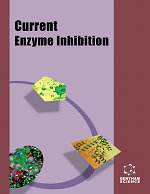
Full text loading...
We use cookies to track usage and preferences.I Understand
Alzheimer’s disease (AD), a progressive neurodegenerative disease for which there is no effective cure is among the leading causes of death worldwide.
To investigate the potential anti-AD activity of berberine (BBR).
In silico assessment included molecular docking and ADMET prediction. BBR’s in vitro inhibitory activity of the target selected from docking results was assessed via colorimetric inhibitor screening assay. BBR’s LC50 in adult zebrafish was determined via an Acute Toxicity Study. ZnCl2 concentration for AD induction was determined via toxicity study and T-maze test. Finally, zebrafish were treated with ZnCl2 alone or simultaneously with either BBR or donepezil and assessed via the inhibitory avoidance task, followed by ELISA of AD-related biomarker levels in brain tissue.
The in silico assessment showed BBR’s desirable drug properties and binding affinity on selected AD-related targets, which was the greatest docking score with AChE. The in vitro IC50 on AChE was 3.45 μM. The LC50 in adult zebrafish was calculated at 366 ppm. In the T-maze test, ZnCl2 at 2.5 ppm caused the greatest cognitive impairment accompanied by moderate freezing. In the inhibitory avoidance test, fish treated with either 100 ppm BBR or 2.5 ppm donepezil had significantly better performance than ZnCl2-treated fish. ZnCl2-treated zebrafish brain tissue had the highest Aβ levels and AChE activity of all groups, but these were significantly lower in donepezil- and BBR-treated fish. ZnCl2- and donepezil-treated fish had similar TNF-α levels, whereas BBR treatment significantly lowered them close to those of untreated fish.
BBR showed anti-amyloidogenic, anti-AChE, and anti-inflammatory effects, which support its potential use in AD therapy.

Article metrics loading...

Full text loading...
References


Data & Media loading...
Supplements

